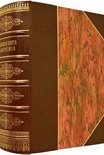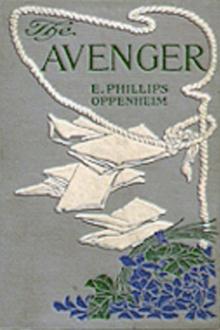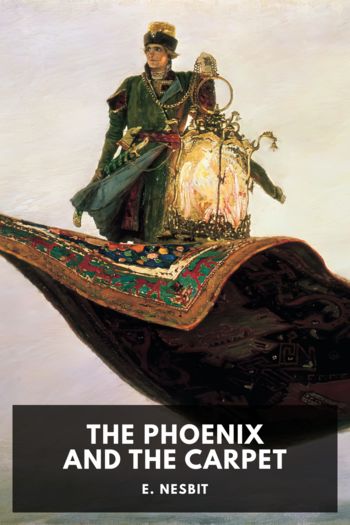Hitler's Terror Weapons, Brooks, Geoffrey [cat reading book .txt] 📗

Book online «Hitler's Terror Weapons, Brooks, Geoffrey [cat reading book .txt] 📗». Author Brooks, Geoffrey
This book concludes that Professor Goudsmit was right. The fact of the matter seems to be that somebody in Germany designed an ‘atomic-type’ weapon, somebody then built it, a scientist described how he had seen it tested and eighty lead cases containing enough material for two more of these small atom bombs turned up on a Tokyo-bound U-boat when searched after being surrendered to the US Navy at the end of the war. Heisenberg directed the German uranium project, but as regards an atomic-type bomb he was quite certain that he had not designed it and nor could he personally have been involved in the experimental foundation work for it in any way whatsoever because there was no such thing.
As a means of correcting Press inaccuracies following the announcement of the American atomic attack on the city of Hiroshima, the contingent of German atom scientists confined at Farm Hall, Cambridgeshire, England, issued a memorandum on 7 August 1945 presenting an outline in brief of the official German Uranium Project. The document was drafted by Heisenberg, Dr Karl Wirtz, his experimental assistant, and Professor Walter Gerlach, last Plenipotentiary for Nuclear Science, after consultation with Professors Diebner, Hahn, von Weizsäcker, von Laue, Korsching, Harteck and Bagge. Three scientists present abstained from signing.
The second paragraph alone alluded to the philosophy of developing nuclear weapons, asserting in a single sentence that “it did not appear feasible at the time to produce a bomb with the technical possibilities available in Germany”. There was an explanatory footnote:
“As to the question of the atom bomb, the undersigned confirm that they have no knowledge of any other group in Germany which had the production of the bomb as an immediate goal. However, if such an attempt was in fact undertaken, then it was made by dilettantes, and should not be taken seriously.”
If the interned group of physicists had no knowledge of a bomb project there was no need to add the final sentence. Ultimately all that is denied is the existence of a group working towards the atom bomb as an immediate goal. If we suppose for a moment that there was a group which had been working on an experiment whose methodology and materials could be adapted if so desired to create a small atomic bomb, then that group would fall outside the German physicists’ denial. Heisenberg was very careful with words. When he took up his pen to draft this crafty document all nine of his colleagues knew exactly which group of ‘amateurs’ they had in mind. As Baron Manfred von Ardenne had defected to the Russians and was building their nuclear weapons for them, they all thought it was a very good idea to point the finger in his direction early on just in case any awkward questions were asked about who built a small-scale German atom bomb during the period 1941–1944.
CHAPTER 3
Heisenberg’s Pioneering Paper
AS A CONSCRIPTED reservist, Professor Heisenberg had served . two months in the previous two summers with the Gebirgsjäger. Obeying a mobilization order late on 25 September 1939, he travelled by train from Urfeld to Berlin and reported to Hardenbergstrasse 12 at ten next morning. There he was informed that his call-up telegram had been a deception and that he should attend next door for a conference of nuclear physicists considering the possible applications of nuclear energy.
The Heereswaffenamt had seized the Kaiser Wilhelm Institute (KWI) for Physics at Berlin-Dahlem as the scientific centre for its uranium research project. Professor Erich Schumann was its coordinating head and he had appointed Dr Kurt Diebner, a second-rank scientist engaged on conventional explosives research, to direct it. The aim was to concentrate and coordinate at Berlin-Dahlem the secret activities of the Uranium Project. In Diebner’s appointment there lay the danger that the project was vulnerable to penetration by political functionaries, as had happened elsewhere. Diebner saw the weakness of his position and agreed that the survival of the Institute depended on it having an authoritative Director. Accordingly he consented to Professor Heisenberg being invited to join the Institute as scientific adviser, travelling from Leipzig University to Berlin once a week. On these visits Heisenberg could intervene to forestall undesirable developments in research in Berlin and elsewhere36.
Professor Schumann’s address to the group emphasized the defence aspects of the enquiry. The German Reich being at war, it was of the greatest importance that Germany should be forewarned of all possible eventualities; this was the purpose of the technical appraisal they would be undertaking. Even a negative conclusion was valuable, for the military could then be reassured that no unpleasant surprises were in store.
The experimentalists were commissioned to undertake a variety of materials measurements in specified areas of research, while Heisenberg was given the written task:
“to consider whether, under the known circumstances of the characteristics of fission processes in uranium, a chain reaction is at all possible, and if so please commit your ideas to paper.”37
Whereas the majority of physicists were willing to affiliate with the Heereswaffenamt group, a large number was not prepared to relocate





Comments (0)